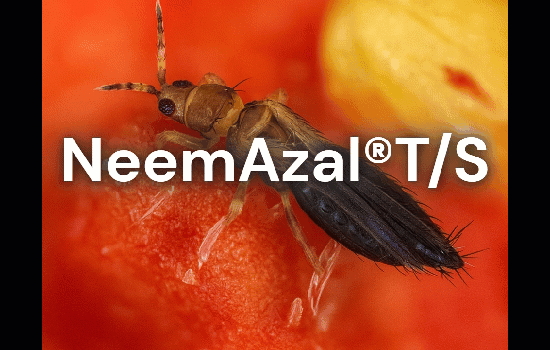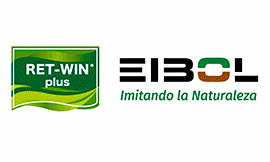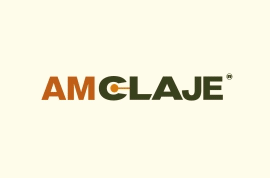INTRODUCCIÓN
Building on progress achieved, the OECD in 2004 adopted the vision3 that by the end of 2014, through the co-operation of OECD member countries working with relevant stakeholders, it will ensure inter alia that:
- the preparation of data submissions (dossiers) for pesticide active substances and for end-use products is co-ordinated globally by industry, to the extent possible, such that opportunities are maximised for work-sharing between the regulatory authorities of OECD member countries;
- work-sharing arrangements between regulatory authorities in OECD countries take place as a matter of routine such that data submissions (dossiers) prepared by industry in the OECD format are accepted in all OECD countries and made available and used globally, notwithstanding the need for supplementary data submissions to address particular local/national conditions and issues, or country specific legal requirement; and
- the generation of a single monograph for each active substance, serving the needs of the regulatory authorities in all OECD countries, has become commonplace, notwithstanding the need for separate independent risk assessments and regulatory decisions in each jurisdiction.
It was envisaged that on implementation of the vision, registrants would benefit from minimization of the time, costs and uncertainty associated with registering new and defending existing products in re-registration programmes, and from earlier access to global market for new products and that the regulatory authorities of OECD countries would benefit from sounder scientific conclusions being reached (that serve as a basis for more timely regulatory decisions), and a requirement for fewer resources for evaluation of data submissions and for peer review of monographs (to be achieved through use of work-sharing arrangements).
In the case of growers and other end users, it was envisaged that they would benefit from earlier access to new pesticide solutions to combat harmful organisms in crops. Finally in the case of consumers / citizens, it was envisaged that they would benefit from a high degree of public confidence in the regulatory system.
Infrastructure
The OECD instruments for ensuring mutual acceptance of data (MAD):
- the Decision of the Council Amending the Decision concerning the Mutual Acceptance of Data in the Assessment of Chemicals 4;
- the Decision-Recommendation on Compliance with Principles of Good Laboratory Practice 5; and
- the Decision on Adherence of Non-Member Countries to the Council Acts related to the Mutual Acceptance of Data in the Assessment of Chemicals 6; developed to eliminate non-tariff trade barriers and to avoid duplicative testing by industry, form the cornerstone on which further infrastructure has been developed by the OECD Pesticides Programme to facilitate use of work-sharing arrangements by regulatory authorities in reviewing data submissions for agricultural pesticides.
The further infrastructure developed includes:
- Electronic templates to provide harmonised standard formats for reporting a summary of the results of tests and studies7. Through use of these templates, governments and industry can electronically exchange test study summary information;
- Guidance for applicants wishing to have particular active substances approved, plant protection products registered or Maximum Residue Limits (MRLs) or Import Tolerances established 8. The guidance provides a common format and structure for the preparation of data submissions to OECD countries, thereby reducing the need for resource-intensive re-formatting, re-structuring and re-writing for individual countries. It facilitates use of electronic data submission systems, and the preparation of countries? review reports to a similar format and structure (monographs);
- Guidance Notes to assist in the interpretation and transparent reporting of toxicological data on pesticides have been developed for repeat-dose toxicity studies 9 and for chronic toxicity and carcinogenicity studies 10; and
- Guidance for use by regulatory authorities on the format and presentation of the documentation (Monographs) to be prepared by them, in the examination of data submissions (dossiers) 11. The guidance developed facilitates exchange of monographs between OECD countries and the sharing of the work necessary for the evaluation of plant protection products and their active substances.
The arrangements for the mutual acceptance of data, together with the formats developed for the preparation of dossiers by industry, the guidance developed for the interpretation of toxicity studies, the guidance developed for the preparation of monographs by regulatory authorities, and the opportunities offered for closed meetings between regulatory authorities and individual companies in the margins of regular OECD meetings, are intended to facilitate the joint review of dossiers using work-sharing arrangements for particular pesticides.
Current Status
The joint evaluation of dossiers submitted in support of applications for approval of new active substances and for the registration of products containing new active substances has become an accepted means of processing such applications in the OECD region. Currently some six separate joint reviews of new active substances are underway. Planning for the joint review of five further new active substances and for two existing active substances has commenced. In all, joint reviews of some 13 active substances from some six separate international companies are either underway or are being planned.
Two pilot projects, involving the use of evaluations prepared by national authorities using work-sharing arrangements for the purposes of JMPR, have been completed. Considerable savings were realised. JMPR found that the greatest impediment to the use of evaluations prepared by the regulatory authorities of OECD countries was the use of different formats for the preparation of evaluations, a constraint that will be overcome when the OECD Monograph format is used by all National Authorities.
No more than a quarter to a third of the dossiers for new active substances developed are being jointly evaluated using work-sharing arrangements. None of the medium or smaller companies have as yet been persuaded to prepare dossiers containing data and information to meet global requirements in the OECD format, such that joint reviews using work-sharing arrangements could be undertaken. While considerable progress has been achieved, it is clear that much remains to be done to persuade key stakeholders of the benefits that will accrue on full implementation of the vision.
The Business Case for Registrants
Time to market and predictability of approval
Following the consolidation that has occurred over the past decade, the marketplace has become extremely competitive and the risks and costs of new product development have increased. Major considerations are the cost of development of a new product and the expected return on that investment. The former estimate can be obtained reasonably simply and is generally quite accurate. However, the latter estimate often contains a degree of uncertainty, due mainly to difficulty in accurately predicting regulatory review time, in some countries. As a result, for marginal business opportunities, uncertainty can make the difference between proceeding, or not, with a new project.
A critical element in developing the financial model for a new product investment decision is the time taken to develop and gain regulatory approval for that product. Application of project management techniques and software make it relatively easy to put together a project plan that captures the elements required to complete a full registration dossier. Dependencies can be built into the model to facilitate an understanding of the impact of a variety of scenarios that could potentially cause delays. The area of greatest variability that can create the most uncertainty is the time required for regulatory review and decision-making (Figure 1). A typical estimate for the financial impact of a delay of one year in regulatory approval is approximately 10% of the Net Present Value (NPV) of a business opportunity. Depending on the actual NPV this could translate into millions of dollars in lost revenue.
Closely related to the "time to market" is the predictability or lack of predictability, of the time taken for approval (Table 1). Businesses hate uncertainty, particularly when it is associated with the timing of the launch of a new product, because of the significant investment at risk. Product launches are the culmination of a number of planned events generally involving meetings with potential customers and demonstration trials of the new product.
These are generally timed to coincide closely with the market launch and first sales of a new product. Initiating those activities too early or too late in the launch process can have negative effects on both the launch and on customer interest in the new product. For example, failure to launch at the expected time generally can result in customer disappointment and subsequent loss of market share to competing products, making it very difficult to recover customer interest and lost sales (Figure 2).
The median estimates provided in Table 1 although somewhat conservative are typical of the inputs that may be used by companies to estimate the financial value of projects. Staggered submissions between the various countries are a reflection of the time needed to fully develop efficacy and residue packages for certain countries and regions. While it is true that in many cases regulatory reviews and decisions can be made earlier than noted in Table 1, it is equally true that initial decisions may not be favourable and that subsequent discussions and negotiations lead to delays. The information included in Table 1 reflects crude but conservative estimates of the amount of time between submission of application and granting of market access and should not be equated with the net working time of the regulatory authorities in processing applications. The periods of time specified include periods where the authorities await submission of additional information as well as periods during which additional data are being generated by the applicant to facilitate completion of evaluations undertaken.
The periods specified also reflect delays arising from shortcomings in dossiers submitted. Thus the periods indicated are not performance measures for the regulatory authorities concerned.
Industry experience with work-share initiatives to-date has shown a great commitment on the part of the regulatory authorities to good project management discipline. Project plans are reviewed and updated on a regular basis to reflect new findings, or information that potentially could positively or negatively impact the overall approval timeline. New product registrants interested in participating in a work-share project are encouraged to meet the relevant regulatory authorities at least two years prior to the submission of new product dossier.
This recommendation together with the detailed project planning undertaken provides at least three major benefits:
- the opportunity to discuss and revise product development strategies to address potential data development questions e.g. streamlining of residue fieldtesting;
- the opportunity to discuss potential issues arising during testing and to adjust testing plans to clarify or address those issues; and
- the potential to more accurately predict regulatory review and approval timing and as a consequence to improve planning for manufacturing and launch activities.
Where joint reviews, involving work-sharing arrangements for the examination of global dossiers prepared in the OECD format, are undertaken, experience has shown that regulatory decisions are made by the participating regulatory authorities within 16 months of submission of the complete dossier.
Maximization of label and market access
As companies evaluate strategies for the development of new products, one of the questions that needs to be addressed early in the process, is the breadth of the initial label. The broader the approved label the higher the potential for initial sales and broad market penetration (Figure 3). However, certain desired label uses may also be more problematic from a human health or environmental safety perspective. Thus, a company may choose to gain early market access by registering a few uses versus risking delayed approval due to questions that may arise from a broad label submission.
From a financial standpoint, a broad label is highly desirable, as long as the additional sales revenue generated provides a reasonable return on the investment required to support those uses. While a particular use may be minor in some countries, it may be more significant in other countries. Minor uses in a number of countries or regions may on an aggregate basis constitute a viable market. In specialty crop markets, farmers growing tomatoes for example, are likely to cultivate a range of other specialty crops. Although the target crop may be tomatoes, it is important to have crops on the label that address the farmer?s other cropping needs. Without such a label, farmers may be reluctant to buy the product, even though it may be the best product for tomatoes. With a label containing recommendations for only a few select crops, it will take much longer to gain peak sales and that those sales may be only 70-80% of the original sales potential. In contrast, approval in a limited number of countries may also delay peak sales but ultimately the product should attain 100% of the sales potential.
Strategic decisions regarding the timing of entry into key markets need to be resolved. There are a number of judgments and opinions that need to be considered.
For example, early approval in key agricultural markets may be accomplished but if the farmers in those countries are unable to export to the US and EU that will tend to limit initial sales. Thus provision must be made for approvals in key importing markets to enable the establishment of import tolerances and minimize non-tariff trade barriers. Such early approvals have the dual benefit of maximizing global sales early in the product?s launch while at the same time enabling the growers to have a broader market access for the crops that they produce.
The OECD work-share process has provided a venue to discuss and plan data development strategies to meet a variety of regulatory stakeholders? needs and to plan coordinated submissions in several countries, for a wide range of uses, at one time. Disharmony of MRL values, lack of accurate information on MRLs in various countries can contribute to as much as 10% loss of sales in certain markets. The work of the OECD Working Group on Pesticides and the Registration Steering Group highlights opportunities for harmonizing approaches to establish "Global MRLs" even where differences in the GAP exist. This is turn can set the stage for early adoption of Codex MRLs, thus facilitating trade between OECD member states and the rest of the world.
Reduction of overall costs
Recent estimates have shown that Crop Protection companies are on average investing more than $200 million on the development of each new active ingredient.
The high cost of discovery and product development has lead to some companies abandoning their discovery research efforts. While it is difficult in most cases to envisage product development costs being significantly lowered as a result of work-sharing efforts, there are some areas where there is potential for cost reduction.
Whereas most areas of a product submission dossier contain core information that is needed by all countries, there are areas where country-specific information is required. For example, laboratory data (e.g. toxicology, metabolism, ecotoxicology) required by countries is essentially the same. However, other data such as supervised residue trials and environmental field studies are generally conducted locally in accordance with the local GAP. The recently developed OECD Test Guidelines and Guidance for residue studies provide a basis for harmonization of study requirements and the mutual acceptance of data generated in various parts of the world. The leveraging of residue field data from one región to another based on their similar climatic conditions may result in further cost savings. Industry estimates that cost savings of 40% could be achieved for a major crop use and approximately 20% for a minor crop use. Work is ongoing that may result in similar opportunities in the area of environmental fate, through recognition and acknowledgement of the similarity of soils used to conduct studies in different regions.
The co-ordinating of the preparation of dossiers to meet the requirements of several different countries is a complex and demanding exercise for industry.
Internal business processes and procedures must be changed to accommodate this new approach and, as with all new approaches, companies must adapt and adjust to meet the challenge. As companies become more experienced and adept at this way of working, the overall cost and time spent preparing one overall dossier will be less than that spent preparing multiple country dossiers. As yet it has not been possible to estimate the savings that will accrue. To maximize the value of a global dossier, it will be important to broaden the impact of work-sharing to include non-OECD countries that are major agricultural producers, e.g. Brazil, China.
Conclusion
There are a number of factors that can affect the viability of a product development project. Among the most important of those are the following:
- the time taken for product development and regulatory review and approval;
- the number of crops for which approval is sought in the original submission and the comprehensive nature of the product label;
- the predictability of the approval process and its influence on manufacturing start-up and product launch activities; and
- the number of countries in which a product can be approved early in the product life cycle (i.e. the greater the market potential, the greater the viability of a product development project).
The degree to which each of these elements impacts upon the value of new venture can be seen in the analysis of Net Present Value and its sensitivity to these factors (Figure 4). It is clear that delays in approval and the breadth of the product label are the most important drivers determining whether a project is successful or not. This is closely followed by the number of countries that can be accessed early in a product launch.
Joint Reviews utilizing work-sharing arrangements require detailed planning that facilitates consideration of each of these critical elements in an optimal manner, facilitating maximal success in product development opportunities.
The overall financial impact of global work-sharing arrangements will vary depending upon each project?s business potential. For a product that is projected to generate upwards of $150 M in global sales, any significant reduction in the regulatory approval timeline that would result in an extra season or year of patent-protected sales would shorten the payback period on project development costs and positively impact the overall competitiveness of that business project.
The Business Case for Regulatory Authorities
Fewer Resources
Experience has demonstrated that the successful completion of joint reviews of active substances involving work-sharing arrangements with a number of regulatory authorities requires considerable management skill and an increased allocation of resources for project co-ordination. The increased investment required, however is more than offset by the savings realised though elimination of evaluative work by specialized experts. On the basis of experience gained and depending on the number of countries involved, it is clear that savings in the range of 33 to 40%, accrue where joint reviews are undertaken using work-sharing arrangements (Table 2). Savings result from the elimination of duplicate evaluations by specialised experts (e.g. toxicologists, residues chemists, ecotoxicologists), but are partly offset by the increased cost of managing and co-ordinating a more complex regulatory system involving a number of regulatory authorities.
Were five regulatory authorities to independently prepare Monographs for a particular compound, the cost to the authorities concerned would amount to ?1.31 million, while working together the cost would be ?0.82 million, giving a saving of some ?490,000. If the cost of peer review is included the saving would amount to ?1.06 million.
While it might be argued that three regulatory authorities are the optimum number to undertake a joint review using work-sharing arrangements, the involvement of a greater number of regulatory authorities in the peer review stages of a joint review can ensure the global relevance and acceptability of the Monograph produced.
Sounder Scientific Conclusions
The quality of Monographs produced, through the joint review of Dossiers by a number of regulatory authorities using work-sharing arrangements, can be assured through the peer review of the evaluations prepared by all of the regulatory authorities participating in the review. The active involvement of experts available to a number of regulatory authorities ensures a global scientific perspective and delivers more robust risk assessments to serve as a basis for decision-making.
Divergences in interpretation that may be encountered can be properly explained and be placed in context, facilitating greater public confidence in the regulatory systems in place.
Acknowledgements: The contributions of the Members of the OECD Pesticide Registration Steering Group (RSG) and the opinions of delegations to the OECD Working Group on Pesticides (WGP) that led to the elaboration and adoption of the paper The Business Case for the Joint Evaluation of Dossiers (Data Submissions) Using Work-sharing Arrangements is gratefully acknowledged.
Resumen
Por decisión tomada el año 2004 la OCDE se comprometió a preparar para finales del 2014 una "propuesta" a los países miembros para armonizar los criterios y exigencias para registrar sustancias activas pesticidas, de manera que siguiendo el formato de la OCDE estas sean adoptadas por todos los países de la organización.
Se estimó que la implementación del punto de vista de la OCDE, en cuya elaboración participarían todos los sectores implicados, reduciría considerablemente el costo de la confección de los dossiers, a la vez que facilitaría e intercambio de información entre las autoridades competentes de los distintos países.
También se estimó que se dispondría de una información técnica más sólida, y sobre todo que reprensaría ventajas tanto para los agricultores que podrían disponer con más rapidez de soluciones para combatir plagas y enfermedades, como para los consumidores, por la confianza que daría el hecho de mejorar la seguridad alimentaria.
La propuesta de la OCDE tendría en consideración los requisitos del futuro Reglamento comunitario sobre comercialización de productos fitosanitarios y las legislaciones del resto de los países que forman parte de la organización.
Comprar Revista Phytoma 192 - OCTUBRE 2007












